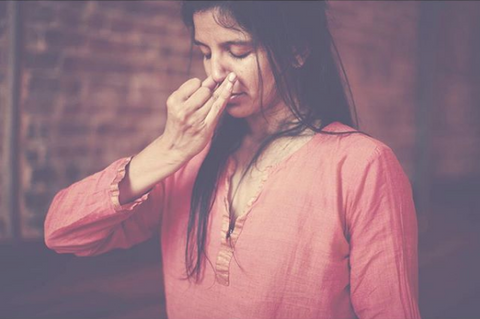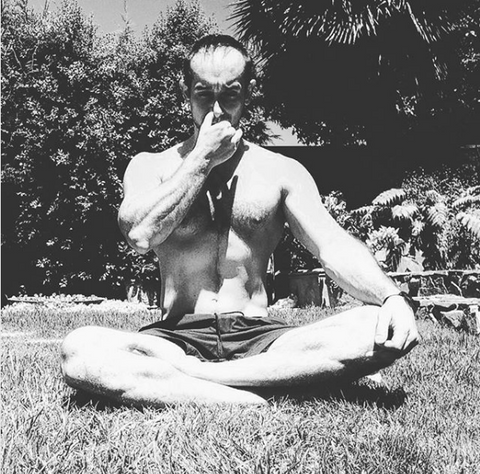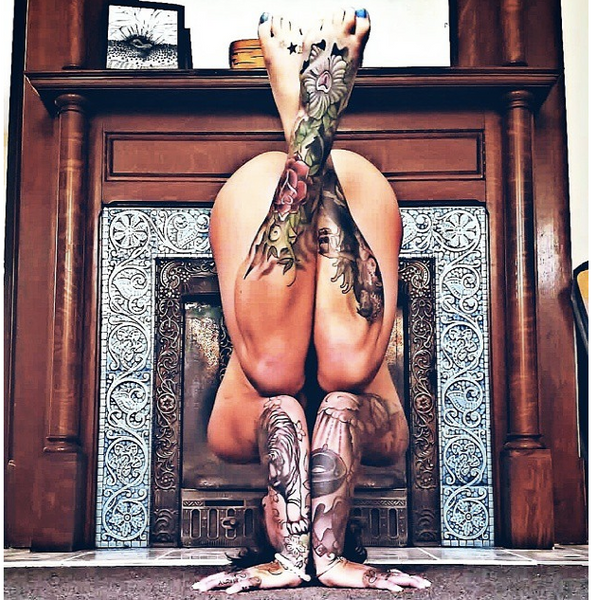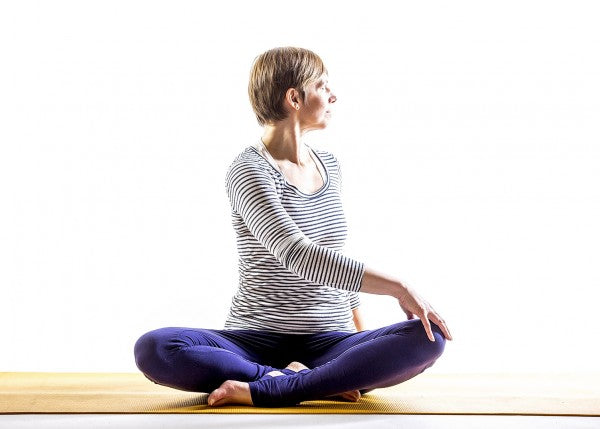Definitive Guide to Pranayama Yogic Breathing Practice
At Lots of Yoga, we are obsessed with Pranayama, or "Yogic Breathing". While we understand that practising asana (poses) and different yoga styles are key to finding your yogic way, we found that Pranayama is *the* foundation to mindfulness and self-awareness, and has been instrumental in both our practice and mental health. Here we share with you our low-down on the most popular pranayama practice, and don't forget to consult with your doctor and yoga teacher on the suitability before you start! We are excited about being part of your journey on this great discovery.
What is Pranayama Breathing?
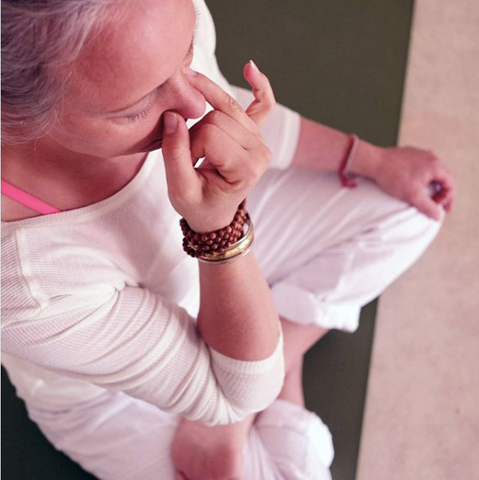
(via @tonsbergyoga and @jesslandman)
Pranayama is one of the elements of the practice of yoga focused on the breath. “Prana”, in Sanskrit, means vital life force, which refers to the breath, and “ayama”, means control. “Pranayama” refers to the practice of breath control. Pranayama is the area of yoga practice that exclusively deals with breathing and how you can improve your breath control and lung capacity. Pranayama is the fourth limb in the Ashtanga Yoga Sutras of Patanjali and was also mentioned in the Bhagavad-Gītā as a "trance induced by stopping all breathing".
Pranayama: Types of Breathing
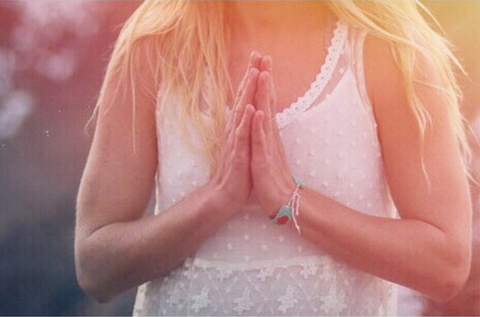
(via @whits_pics and @carrie_rossman)
To properly understand Pranayama and what the yogic breathing exercises aim to achieve, let's understand the different types of breathing.
High Breathing
High Breathing refers to breathing that takes place in the upper part of the chest and lungs. It involves breathing that engages movement of the ribs, collarbone and shoulders. High breathing is usually done by people with asthma, a tight belt, a full stomach or anyone short of breath for any reason. In yogic breathing, this is considered the least desirable form of breathing. High breathing only engages the upper lobes of the lungs and does not utilise their full capacity. It is a common cause of digestive and stomach issues, constipation and gynaecological problems.
Middle Breathing
Middle Breathing happens when the middle area of the lungs are filled with air. It has certain similarities to high breathing as the ribs rise and the chest expands to a certain extent. In addition, this type of breathing engages the diaphragm and the abdomen. While this form of breathing is deeper than high breathing, it is still a shallow type of breathing.
Low Breathing
Low breathing engages the lower part of the chest and lungs. It involves consciously moving the abdomen in and out, hence changing the position of the diaphragm. Whenever you slacken your shoulder and chest muscles and often during sleep, you engage in low breathing. It is a far more effective type of breathing than either high or middle breathing because it makes use of the lower areas of the lungs, which have better capacity, creating better movement of air in the lungs. Low breathing should be engaged as often as possible.
The Complete Breath
When you practice all three of the above types of breathing together, you get the complete breath. The complete breath is the deepest form of breathing, engaging the entire capacity of the lungs. The complete breath involves moving the shoulders, collarbones, ribs, chest, diaphragm, and abdomen, working together to fill the lungs to their maximum capacity. Pranayama is all about the complete breath with yogic breathing techniques and exercises striving to engage and master the complete breath.Components of Pranayama Yoga Breathing
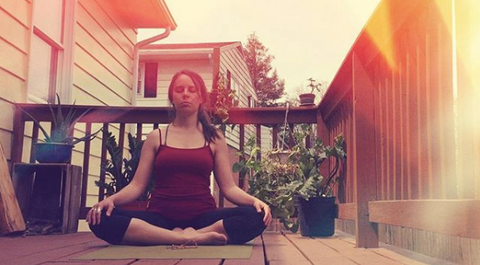
Pranayama exercises consist of 4 components. They are:
1. Puraka (Inhalation)
Puraka is a single inhalation or the act of taking a breath in. It must be one continuous, smooth breath either through the nose or the mouth. It can either be a short inhalation or a long one without a pause.
2. Abhyantara Kumbhaka (Pause After Inhaling)
Kumbhaka is a conscious pause to stop the flow of air to the lungs. During the pause, you don't inhale or exhale, keeping only whatever air you have already inhaled in the lungs.
3. Rechaka (Exhalation)
The third component is Rechaka or exhalation. Similar to the inhalation, it is a smooth, continuous motion. During the exhalation, you must expel all the air in your lungs.
4. Bahya Kumbhaka (Pause After Exhaling)
The final component in yogic breathing is the pause after exhaling. This pause completes the breathing cycle and a new cycle begins with the next inhalation.
Pranayama Benefits
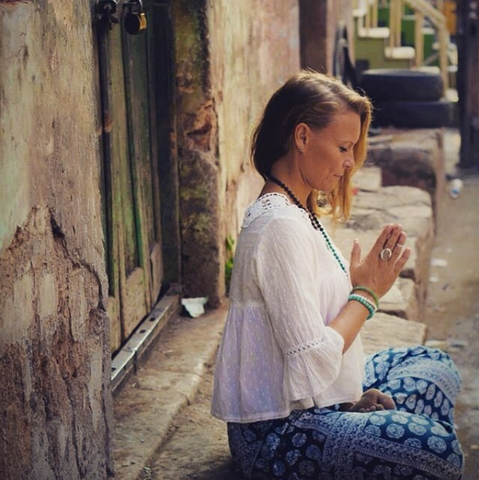
There are many benefits to learning how to breathe correctly which can be felt quite early on in the practice of Pranayama. These benefits include:
- Helping to access the full capacity of the lungs. With the breathing exercises, you increase the capacity of the lungs, consequently increasing the oxygen supply to the body, helping it to operate well and improve the body functions. A study conducted among 91 healthy adults showed a significant improvement in their lung capacity after a 12-week practice of Pranayama.
- Increasing the oxygen in the blood, therefore improving the circulatory system. This, in turn, allows the body to expel toxins and body wastes more effectively. Better circulation also means better digestion and improved metabolism. A 2015 study conducted in India among university girls between the age of 21-26 found that Pranayama exercises had a positive effect on the metabolic fitness of the participants.
- Improved concentration and focus. It also helps reduce stress and relaxes the body.
- Increased self-control. Pranayama improves the mental process helping the mind to function with more clarity. This consequently improves control over the physical body.
- Harmonising the body, mind, and spirit. Yogic breathing can help rejuvenate and recharge the body and mind.
Pranayama Techniques: Basic Guidelines to Yogic Breathing
Before you begin your practice of Pranayama, you should keep in mind a few general guidelines that will help you with your practice.
- When practising Pranayama, never push yourself to the point of exhaustion. If any exercise makes you light headed, stop and return to your regular breathing.
- There is no need to do too many repetitions of one exercise. 5 minutes is more than enough.
- It is important to feel the breath go into your body, fill your lungs and then go out. Feel the movements that take place with the act of breathing. Focus your attention on the exercise at hand, not doing the exercises mechanically.
- Take your time with yogic breathing. Do not rush or hasten your practice.
- Try to introduce variety and change. Increase the amount of time you inhale/exhale or how long you hold your breath between inhalation and exhalation.
- Pranayama is a gentle breathing technique. All exercises must be done in a gentle manner.
- Your breathing should be smooth, steady, and continuous; avoid jerky and uncontrolled breathing.
Yoga Breathing Exercises
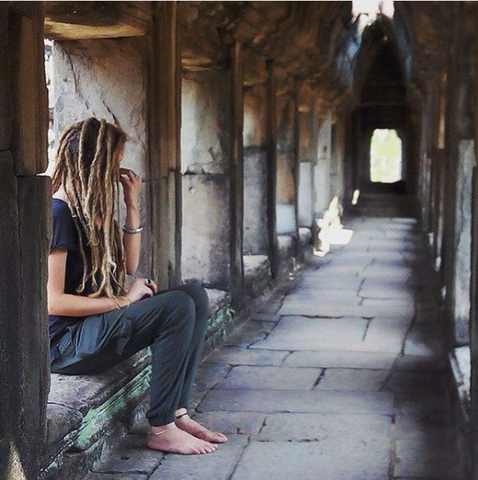
There are many different pranayama exercises to do so you'll never get bored. The most popular are:
Kumbhaka Pranayama
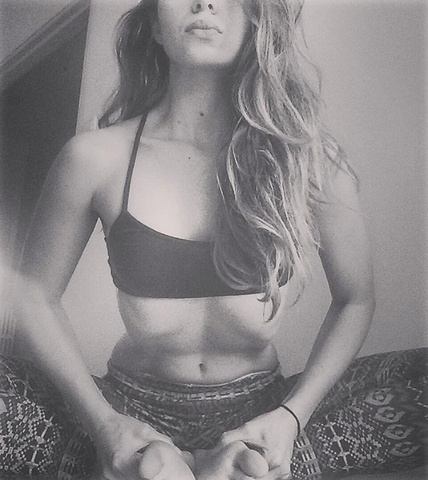
Kumbhaka Pranayama is the practice of breath retention. The practice of Kumbhaka is to make a conscious pause between inhalation and exhalation. Kumbhaka improves your cardio-vascular function and improves your endurance. Instructions
- Sit comfortably with a straight spine, rest your hands on your knees, palms facing down.
- Breathe normally with both your nostrils. Inhale to the count of 5.
- Then, hold your breath for 20 counts and exhale slowly for 10 counts.
Nadi Shodhana Pranayama
Nadi Shodhana is also known as 'alternate nostril' breathing. This technique helps cleanse the body's energy channels. It strengthens the nervous system and provides relief from stress and insomnia. Instructions:
- Sit in a comfortable position, with a straight back.
- Place your left hand on your knee, palm facing down. With the right hand, fold the forefinger, middle and ring finger. Keep the thumb and small finger pointing outwards.
- Close you right nostril with thumb and inhale through left nostril. Count slowly to 5 during the inhalation.
- Close the left nostril with the little finger, and simultaneously release the thumb from the right nostril and exhale. Count to 10 during the exhalation. You should take twice as long to exhale as you do inhale. This is one breathing cycle, you may repeat the cycle for up to 3 minutes.
- Alternate the position of both hands, placing the right hand on knee and using the left hand. This time inhaling from the left nostril and exhaling from the right.
Ujjayi Pranayama
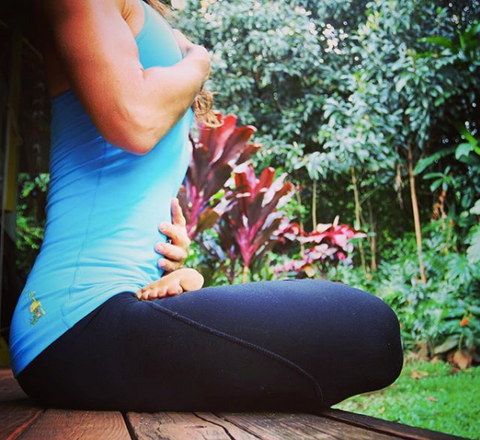
- Sit in a comfortable position with a straight spine and place your hands on your knees, palms facing down.
- Take a deep breath. While inhaling contract the throat to make a hissing sound. Count to 5 as you inhale.
- Exhale slowly through nose again by making the same hissing sound. Count to 5 as you exhale.
- Repeat this cycle for 5 minutes.
Bhastrika
In Sanskrit, 'bhastrika' means 'to bellow', therefore, this technique is also known as 'bellows breath'. This exercise helps warm up the respiratory system and invigorate the body. The Bhastrika technique heats up the body, it involves quick, sharp, inhalations and exhalations. Instructions:
- Sit comfortably, with the spine straight. Place your hands on your knees, palms facing down.
- Take a quick and strong inhalation.
- Exhale forcefully by contracting your diaphragm. Repeat this for 1-2 minutes.
Mrigi Mudra
Mrigi Mudra means 'deer seal' in Sanskrit. This name come from the formation of the hand while doing this breathing exercise. Mrigi Mudra helps alleviate headaches, stress and calms the mind. Instructions:
- Sit in a comfortable position, with a straight back.
- Place your left hand on your knee, palm facing down. With the right hand, fold the forefinger and middle. Keep the thumb, the ring finger, and small finger pointing outwards.
- Close you right nostril with thumb and inhale through left nostril. Count slowly to 5 during the inhalation.
- Then close the left nostril as well with the ring and small finger. Count to 5.
- Release the thumb from the right nostril and exhale. Count to 5 during the exhalation. This is one breathing cycle. Do 2-3 cycles.
- Alternate the position of both hands, placing the right hand on knee and using the left hand. This time inhaling from the left nostril and exhaling from the right.
Simhasana
The Simhasana, also known as lion's pose is a combination of breathing and a yoga posture. This exercise involves forceful exhalation, facial muscles, and body posture to mimic a lion's roar. It relieves stress on the facial muscles, improves circulation, and clears the throat. Instructions:- Sit in a kneeling position with a straight spine. Place your hands on your thighs with palms facing down with fingers spread out.
- Inhale deeply through the nose.
- Lower your jaw as much as possible, stretch your tongue down towards your chin. Open your eyes and look upwards. Contract the throat as you exhale through the mouth to make a hissing sound.
- Return to your beginning position, relax the face. Repeat this 2-3 times.
Kapalabhati Pranayama
(via @veggies_and_vinyasa and @om.budd)
In Sanskrit, 'Kapal' means skull and 'Bhati' means to illuminate or shine. This type of Pranayama helps clear up the sinuses. The technique involves a deep inhalation and quick forceful exhalations. Instructions:
- Sit comfortably with a straight spine. Place one hand on your lower abdomen to focus your concentration on that area and the hand on you knee, palm facing down.
- Take a deep breath through the nose.
- Try to force the air out of your nose in a quick short burst. Try to contract your abdomen as you exhale.
- Release the contraction and repeat.
- As a beginner, do not go too fast, try approximately 60-70 inhalation/exhalation cycles per minute. Gradually quicken the pace to 90-100 cycles per minute.
- After every minute of the exercise, inhale deeply and exhale slowly through your mouth.
Pranayama Meditation
Yogic breathing is a magnificent tool in meditation. Concentrating and focusing attention on the breath is usually the first point of call in meditation. What better way to get in touch with your inner self than by focusing on the breath, the life force. Once you try to master the full yogic breath and bring the full and sole attention to the breath, it makes it harder for the mind to wander, eventually getting that full hour or half hour of "no thinking" that we aim for in meditation and the path to self-realisation.
Pranayama Youtube Videos
This 7-minute video helps you learn how to do the complete breath, we recommend you check it out before going into Pranayama techniques.
Once you are done with that, these next videos are perfect for those who are just starting their Pranayama practice.
Pranayama Books
If you'd like to learn more about Pranayama, you can invest in one or both of these books on yogic breathing which will improve your understanding of these techniques and learn new exercises as well:- Light on Pranayama: The Definitive Guide to the Art of Breathing by B.K.S. Iyengar – This is a classic book by one of the most eminent teachers of yoga. It provides various yogic breathing techniques with a step-by-step guide and explanations.
- Pranayama: The Energetics of Breath: The Yoga of Breathing by Andre van Lysbeth and Brian Cooper - This book is a more up to date guide which provides the reader with the scientific reasoning, cosmic aspects, and practical techniques of yogic breathing.
Pranayama DVD
If you're more of a visual practical person, and want to have something in hand to be able to start your yogic breathing, why don't you give one of these DVDs a try.- Yoga Pranayama by S. Satyamoorthy - Learn 20 different Pranayama techniques from this DVD to help improve your concentration and reduce stress.
- Relaxation and Breathing by Rodney Yee - This two-part DVD will teach you yoga poses in part one and yoga breathing techniques in part two for overall well-being.
- Pranayama for Self Healing by Vasant Lad - This DVD will teach you Pranayama techniques for self-healing along with explanations of the benefits of these yoga breathing exercises
Pranayama Bolster
Making sure you are comfortable in Pranayama is imperative so as to eliminate anything that could distract you from its therapeutic benefits. You might want to make or invest in a bolster which is especially designed for yogic breathing or meditation. Here are a couple we've found.

Milliard Yoga Bolster - £22.99
- £22.99
Yoga Bolster By Susama - £23.95
- £23.95
Buckwheat Bolster with removable cotton cover - £24.00
- £24.00
Or you can always make your own! Here is out 3-minute guide to making a yoga bolster with items you probably already have at home.

Do you like Pranayama? Are there any exercises you feel we missed out? Please share them with us! We'd love to hear from you.

